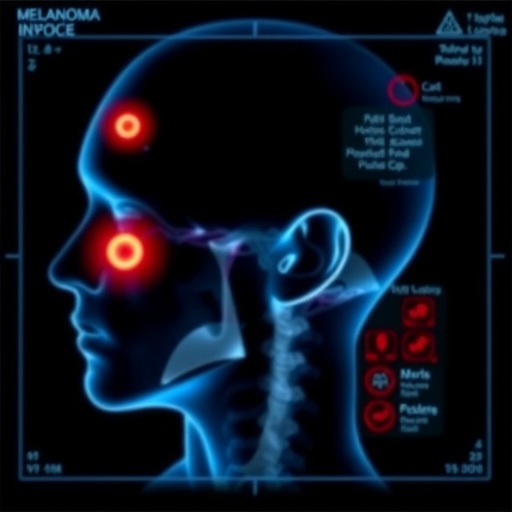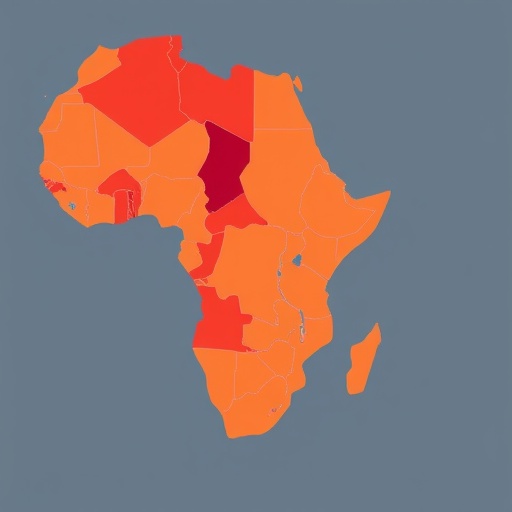
In a groundbreaking advance melding artificial intelligence with dermatology, researchers have unveiled an explainable AI system that significantly enhances the accuracy of melanoma diagnosis by emulating the diagnostic reasoning patterns of expert dermatologists. This innovative approach integrates cutting-edge machine learning frameworks with eye-tracking technology, enabling the AI to not only identify suspicious skin lesions with high precision but also to transparently illustrate the rationale behind its conclusions, akin to a human expert’s visual diagnostic process. Such explainability is crucial for fostering trust and adoption among clinicians, who often view traditional “black box” AI systems with skepticism due to their opaque decision-making pathways. The study, recently published in Nature Communications, demonstrates that embedding human-like visual attention and interpretability into AI models can revolutionize early melanoma detection—potentially saving countless lives.
Melanoma, a deadly form of skin cancer arising from melanocyte mutations, poses significant diagnostic challenges even for experienced dermatologists. Early and accurate detection is paramount, as prompt treatment dramatically improves patient prognosis, but diagnostic errors remain a common hurdle due to lesion heterogeneity and subjective visual assessment. Existing automated systems focusing solely on pixel-level pattern recognition frequently lack interpretability and contextual understanding, leading to hesitancy in clinical adoption. To address this, the research team, led by Chanda et al., conceived an AI that mimics the attention mechanisms used by dermatologists during lesion evaluation. Their approach involved collecting extensive eye-tracking data from experts as they examined dermoscopic images, thereby mapping the visual features and regions of interest prioritized during diagnosis.
The integration of eye-tracking data proved transformative, enabling the AI to learn patterns of visual attention associated with accurate clinical judgment. By aligning its focus with that of human experts, the AI could selectively analyze lesion subregions critical for melanoma differentiation, such as asymmetry, border irregularity, color variations, and structural patterns. This methodological innovation bridged the gap between conventional image classification and cognitive diagnostic processes, allowing for a layered, interpretable analysis that highlights specific lesion characteristics supporting a malignant or benign conclusion. Importantly, this mechanism empowers clinicians to interrogate and understand the AI’s diagnostic trail, promoting collaborative decision-making rather than blind reliance on algorithmic outputs.
The researchers utilized a deep convolutional neural network architecture augmented with attention modules trained on a large dermoscopic image dataset, encompassing a diverse array of pigmentary patterns and lesion types. The training phase incorporated both labeled images and corresponding eye-tracking heatmaps derived from dermatologist participants. This dual-input design enriched the model’s internal representations, enhancing its sensitivity to subtle visual cues often overlooked by conventional AI. Testing revealed that the model achieved superior diagnostic performance compared to standard AI classifiers, with a marked increase in specificity and sensitivity metrics, thereby reducing false positives and negatives that can lead to unnecessary biopsies or missed malignancies.
Crucially, explainability was embedded at each stage of the decision pipeline. The AI system generated visual maps delineating the regions it deemed most informative, mirroring the expert’s focal points. These maps were validated against independent dermatologist evaluations to confirm their diagnostic relevance. Additionally, the AI output included textual annotations referencing well-established clinical features, such as pigment network irregularity and atypical globules, offering a linguistically accessible rationale for each classification. This dual modality—visual and textual explanation—addresses the complex interpretative needs of dermatologists, whose expertise blends perceptual acuity with nuanced clinical knowledge.
Beyond technical advancements, the study’s implications extend to clinical practice and patient outcomes. By demystifying the AI’s decision-making process, dermatologists can more confidently integrate this tool into routine screening workflows, using it as a second opinion or real-time assistant, especially in ambiguous cases. This could alleviate diagnostic workloads, streamline referrals, and optimize resource allocation within dermatology clinics. Moreover, patients stand to benefit from earlier detection, enhanced diagnostic precision, and personalized treatment plans informed by transparent, interpretable AI insights.
The use of eye-tracking as a foundational element is notable not only for its innovation but also for its interdisciplinary nature, uniting cognitive psychology, computer vision, and clinical medicine. Eye-tracking captures implicit expert knowledge that is difficult to articulate yet critical in visual diagnosis, thus encoding a layer of tacit expertise into machine learning models. This paradigm shift towards embedding cognitive signatures into AI promises to enhance the interpretability and clinical relevance of diagnostic systems across medical specialties where visual assessment dominates.
While the results are promising, the authors acknowledge challenges ahead. Scaling the model for diverse populations with varying skin types and lesion presentations will require expansive, representative datasets. Additionally, regulatory frameworks governing medical AI must evolve to account for explainable systems, ensuring safety and efficacy while fostering innovation. Integrating this technology within existing electronic health records and teledermatology platforms also presents technical and logistical complexities that necessitate collaborative stakeholder engagement.
Future research directions include refining the granularity of attention mapping, enabling the AI to dynamically adjust its focus based on lesion context and patient history. Combining multimodal data inputs such as genetic markers or patient demographics could further enhance predictive accuracy. Moreover, longitudinal studies assessing real-world diagnostic improvements, patient outcomes, and cost-effectiveness will be crucial to validate the clinical utility of this dermatologist-like AI system.
The transformative potential of explainable AI in dermatology exemplifies a broader trend towards human-centered machine learning in medicine. By fostering transparency and trust, these systems can augment rather than replace clinical expertise, empowering physicians with enhanced diagnostic tools. The fusion of cognitive science and artificial intelligence heralds a new era in healthcare innovation, where machines learn from and collaborate with human professionals to improve patient care in profound ways.
In conclusion, the study by Chanda, Haggenmueller, Bucher, and colleagues marks a significant milestone in the evolution of medical AI, demonstrating how embedding expert cognitive processes and explainability can dramatically enhance melanoma diagnosis accuracy. Beyond melanoma, this approach offers a template for deploying explainable AI in other visual diagnostic domains, promising safer, more reliable, and clinically acceptable AI-assisted medicine. As research progresses, such interdisciplinary innovations may fundamentally reshape diagnostic paradigms, paving the way for AI systems that truly think—and explain—like doctors.
Subject of Research: Explainable Artificial Intelligence for melanoma diagnosis using eye-tracking data to emulate dermatologist visual attention and improve diagnostic accuracy.
Article Title: Dermatologist-like explainable AI enhances melanoma diagnosis accuracy: eye-tracking study.
Article References:
Chanda, T., Haggenmueller, S., Bucher, TC. et al. Dermatologist-like explainable AI enhances melanoma diagnosis accuracy: eye-tracking study. Nat Commun 16, 4739 (2025). https://doi.org/10.1038/s41467-025-59532-5
Image Credits: AI Generated
Tags: AI in dermatologyearly melanoma detection solutionsexplainable AI for melanomaeye-tracking technology in dermatologyintegrating human-like reasoning in AIinterpretability in AI systemsmachine learning in healthcaremelanoma diagnosis accuracyovercoming diagnostic errors in dermatologyskin cancer detection advancementstrust in AI for cliniciansvisual diagnostic processes






